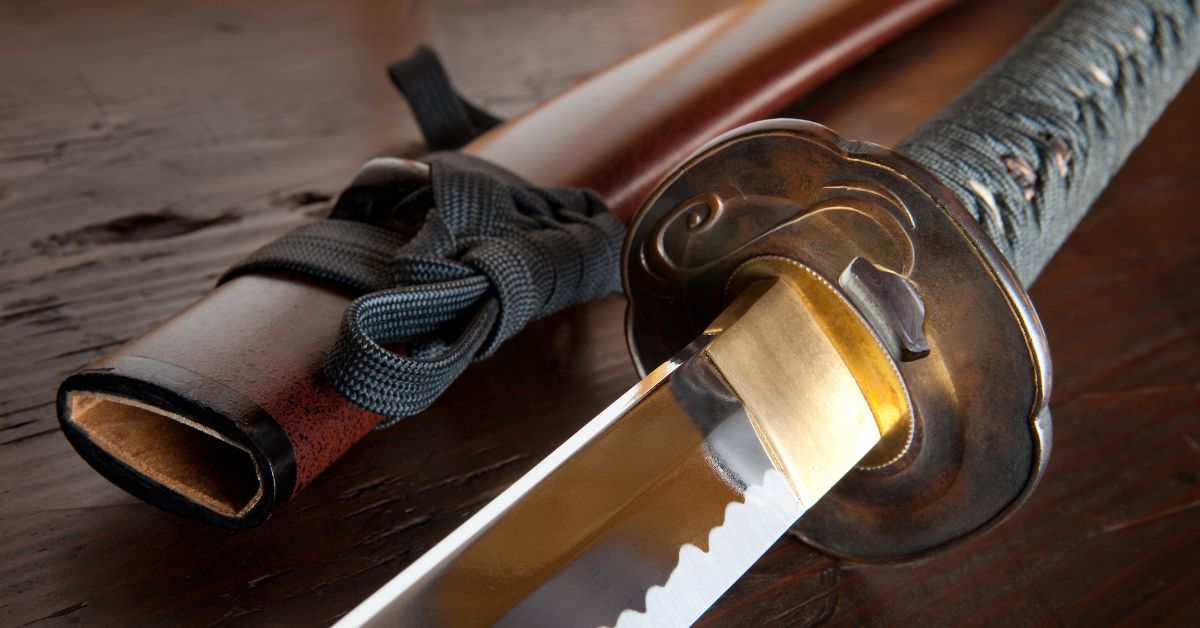Chokuto vs Katana: Their Main Differences

The world of traditional Japanese swords is both fascinating and complex, with a rich history that spans centuries. Among the various types of swords that have emerged from Japan, the Chokuto and the Katana are two that often capture the interest of enthusiasts and historians alike.
What is a Chokuto?
A Chokuto is an early type of Japanese sword, characterized by its straight blade. Originating in the Heian period (794-1185 AD), it was influenced by similar straight swords from China and Korea. Primarily used before the rise of the samurai class, the Chokuto was a preferred weapon for infantry and foot soldiers. Its design is simpler and lacks the curve that is typical of later Japanese swords like the Katana.
Main Differences Between the Katana and Chokuto Sword
While they may appear similar to the untrained eye, these swords have distinct characteristics and histories that set them apart. In this blog post, we'll delve into the main differences between the Chokuto and the Katana, exploring their design, historical context, and usage.
Historical Emergence and Evolution
Chokuto
The Chokuto is one of the earliest types of Japanese swords, dating back to the Heian period (794-1185 AD).
Influence
Its design was heavily influenced by the straight swords from China and Korea.
Usage
Primarily used before the development of samurai culture in Japan, the Chokuto was a weapon of choice for infantry and foot soldiers.
Katana
The Katana emerged during the Kamakura period (1185–1333 AD), a time when the samurai class began to gain prominence.
Evolution
It evolved from the Tachi, a curved sword that was worn hanging from the belt with the edge facing down.
Cultural Significance
The Katana is not just a weapon but a symbol of the samurai spirit and Japanese culture.
Design and Structural Differences of Chokuto and Katanas
Chokuto Blade and Construction
The most notable feature difference of the Chokuto compared to the Katana is its straight blade.
It was typically constructed using a simpler, earlier method of sword making, which resulted in less durability compared to later swords like the Katana.
Katana Blade and Construction
Katanas are renowned for their distinctive gentle curve, which is ideal for slicing motions in combat. The making of a Katana is a highly skilled and intricate process, involving the folding and forging of steel to create a blade that is both sharp and resilient.
Katanas often have a decorative and functional guard, which is not commonly found in Chokutos.
Usage and Fighting Style
Chokuto
The straight blade of the Chokuto was more suited for stabbing and thrusting movements, typical of infantry combat. Its usage declined as curved swords, which were more effective for mounted combat, became prevalent.
Katana
The Katana was the preferred sword of the samurai, used both in battle and as a status symbol.
The curved blade allows for more fluid and dynamic slicing motions, making it more effective for the swift and precise strikes characteristic of samurai fighting techniques.
Cultural and Symbolic Significance
Chokuto
The Chokuto is often seen as a representation of the early stages of Japanese swordsmanship and metallurgy. It holds a place in Japanese history but lacks the cultural and spiritual symbolism associated with the Katana.
Katana
The Katana is more than a weapon; it is a symbol of the samurai ethos, embodying honor, precision, and discipline. It has a significant place in Japanese culture, art, and folklore, and continues to be revered as a masterpiece of craftsmanship and design.
Conclusion
The Chokuto and Katana are both remarkable in their own right, each representing different eras and aspects of Japanese history and swordsmanship. The Chokuto marks the beginning of Japanese sword making, a straightforward yet effective weapon of its time. The Katana, on the other hand, is a symbol of refinement in both craftsmanship and martial skill, embodying the spirit of the samurai.
Understanding these differences not only gives us insight into the evolution of Japanese swords but also into the cultural and historical context that shaped them. Whether you are a history buff, a martial arts enthusiast, or simply someone fascinated by traditional weaponry, the stories behind these blades are sure to captivate and educate.
Best Sellers
- Regular Price
- from $199.99
- Sale Price
- from $199.99
- Regular Price
-
- Unit Price
- per
- Regular Price
- from $299.00
- Sale Price
- from $299.00
- Regular Price
-
- Unit Price
- per
- Regular Price
- from $199.00
- Sale Price
- from $199.00
- Regular Price
-
$0.00
- Unit Price
- per
- Regular Price
- from $619.00
- Sale Price
- from $619.00
- Regular Price
-
- Unit Price
- per
- Regular Price
- from $319.00
- Sale Price
- from $319.00
- Regular Price
-
- Unit Price
- per
- Regular Price
- from $249.00
- Sale Price
- from $249.00
- Regular Price
-
- Unit Price
- per
- Regular Price
- from $219.00
- Sale Price
- from $219.00
- Regular Price
-
- Unit Price
- per
- Regular Price
- from $339.00
- Sale Price
- from $339.00
- Regular Price
-
- Unit Price
- per
- Regular Price
- from $519.00
- Sale Price
- from $519.00
- Regular Price
-
- Unit Price
- per
- Regular Price
- from $364.00
- Sale Price
- from $364.00
- Regular Price
-
- Unit Price
- per









